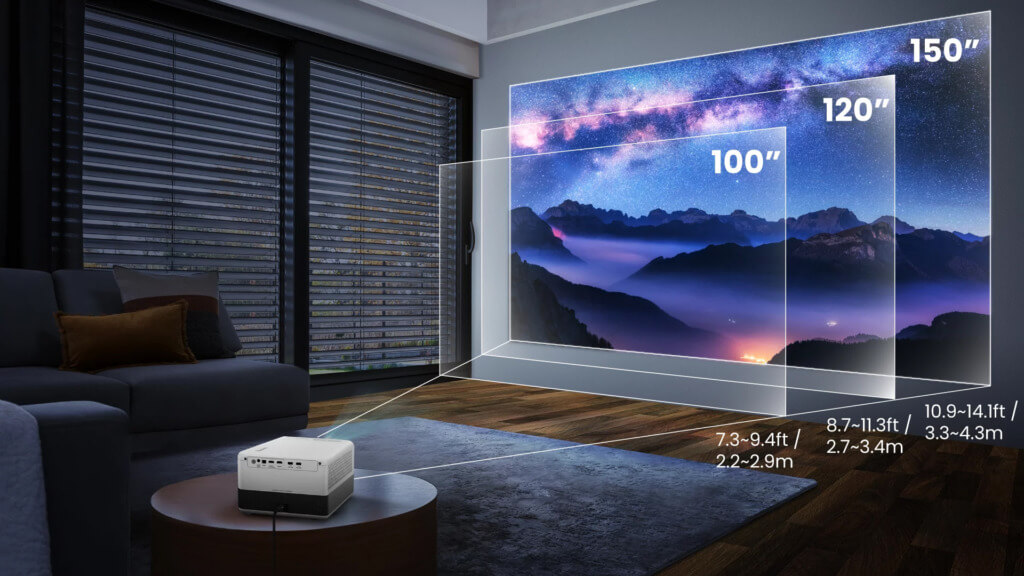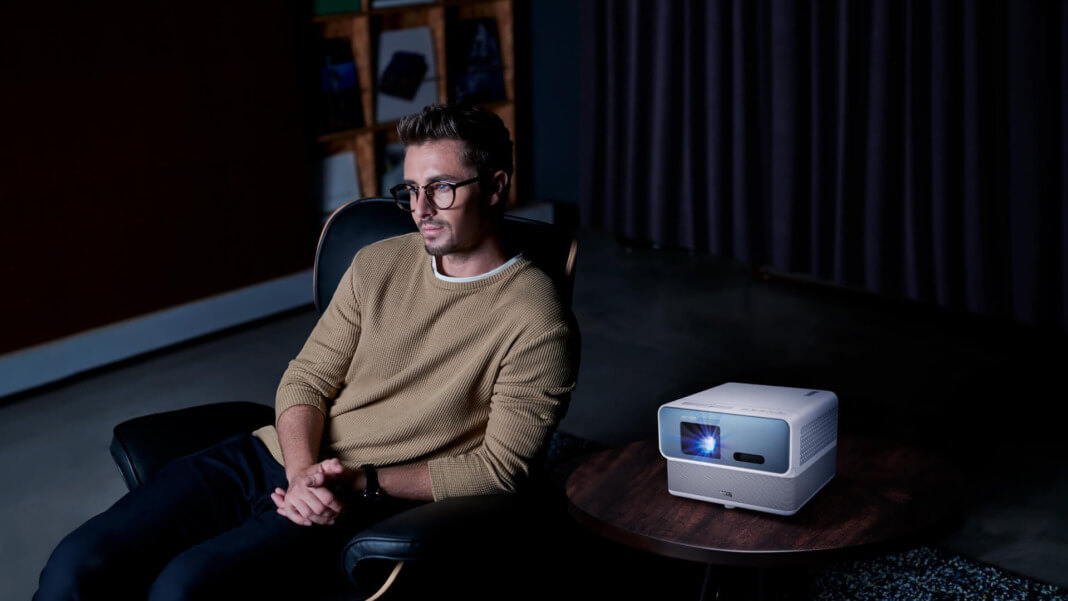Setting up a home theatre is much like meticulously crafting an art piece. Every detail and component seamlessly comes together to form a harmonious orchestration of visuals and acoustics, echoing the intricate details of a masterwork. The objective transcends the simple act of watching films; it’s an endeavour to encapsulate the mystique and allure of a grand cinema hall, transforming an ordinary room into an enthralling cinematic universe. The very essence lies not just in the large screens or impressive sound systems but in creating an ambience where the viewer feels transported to another realm.
However, amid mounting excitement and the temptation of the latest technology, there’s a propensity to overlook some foundational technicalities, with the throw ratio often being the most overlooked. Though seemingly minute, such oversights can significantly diminish the envisioned cinematic nirvana, leaving one with a compromised viewing experience. It underscores the importance of delving deep into the intricacies of home theatre setups, recognising the importance of throw ratios. A holistic understanding of these elements, combined with the right product specifications, becomes the compass guiding enthusiasts towards the epitome of cinematic excellence in their personal sanctum.
Understanding the throw ratio and its paramount importance
At its core, the throw ratio symbolises the relationship between the distance of the projector lens to the screen and the screen’s width. For the uninitiated, if you have a projector with a throw ratio 2:1 and place it 4 metres away from the screen, the projected image will be 2 metres wide. Grasping this concept is vital because even a minute miscalculation can lead to various issues ranging from distorted visuals to blurry or unfocused projections.
One must remember that achieving the right throw ratio is not a mere exercise in fitting an image to a screen. It’s a nuanced balance of projector distance, image quality, and understanding the dynamics of the room. The relationship between projection distance and screen size is defined as:
Throw Ratio = Throw Distance / Image Width
There are many choices in terms of machine size and projector lens design. Among all existing projectors, a throw ratio of around 1.13:1 is the most common design with the lens in the front of the projector. These designs can require distances as short as 8.2 ft to project a 100-inch screen, which is the most common throw distance setup in limited space or small apartments.
For spaces where the projectors cannot be aligned to the centre of the screen, select a model equipped with vertical/horizontal keystone correction or lens shift to experience the immersive thrill of a huge screen that’s only available at theatres.
The pitfalls of overlooking the throw ratio
There are mainly three types of projectors based on throw ratios: standard throw, short throw, and ultra-short throw. Each is designed for different room sizes and configurations. For instance, an ultra-short throw projector might be ideal for a compact room. Using a standard throw projector in a small room can result in an oversized, distorted image.
The shape and size of your room play a significant role in determining the ideal throw ratio. Features like alcoves, windows, and even furniture can cast shadows on the screen if the projector is not positioned correctly. This mistake can hinder the overall viewing experience.
When setting up a home theatre, many focus on getting the largest screen possible without considering the throw ratio. A mismatch between the screen size and the throw ratio can lead to cropping, distortion, or even reduced image quality.
While not directly related to the throw ratio, ambient light can affect the clarity and vibrancy of the projected image. If your throw ratio is already on the edge of being too large for your screen, any ambient light will further wash out the image, making it appear faded.
Strategies to sidestep common throw ratio blunders

Setting up a home theatre can be a compelling venture. However, beyond the thrill of owning state-of-the-art equipment lies the intricate realm of technical details, which, if not attended to, can drastically affect your viewing experience. Here are a few strategies to ensure you get the most out of your home theatre:
- Know your space: Before diving into the world of projectors, step back and assess your room. Meticulous measurements are the foundation of any successful home theatre setup. Identify potential projector locations and gauge the distance from your preferred screen position. Armed with these dimensions, you can select a projector that complements your space’s characteristics, ensuring the throw ratio aligns seamlessly with your setup.
- Invest in adjustable mounts: One might be tempted to opt for fixed options due to their economical nature regarding projector mounts. However, the value of adjustable mounts must be considered. They provide the flexibility to make minute adjustments, fine-tuning the projector’s position for optimal image size and clarity. This adaptability is essential, especially when dealing with intricate throw ratios.
- Consult professionals: The world of home theatre setups is vast and can sometimes be overwhelming. If you find yourself grappling with the nuances of throw ratios or other technical aspects, do not hesitate to consult experts in the field. A professional assessment can provide insights tailored to your space, ensuring you select equipment that maximises your cinematic experience.
- Regularly recalibrate: A home theatre is not a ‘set it and forget it’ venture. Over time, subtle shifts in projector positioning or alterations in room dynamics can disrupt your initially perfect setup. Regular recalibrations are vital to maintain the zenith of image quality. Periodic checks ensure that any changes are accounted for, preserving the immersive experience you’ve strived for.
- Leverage product features: Modern projectors, like the BenQ GV31 and X3000i, come laden with features that can simplify your setup process. For instance, the GV31, ideal for smaller rooms, offers a fixed lens, removing the need for constant zoom adjustments. On the other hand, the X3000i provides an adjustable throw ratio, accommodating a broader range of room configurations. By understanding and capitalising on these inbuilt functionalities, you can optimise your projector’s performance, aligning it perfectly with your room’s dimensions and requirements.
In the pursuit of cinematic perfection
The allure of bringing cinematic grandeur into one’s home is a dream nurtured by many. But as with any artistic endeavour, the result is often a product of knowledge and passion. While selecting the perfect projector remains a paramount step, it is a single note in the symphony of constructing a home theatre.
A thorough grasp of technicalities such as throw ratios and zoom functionalities is, without a doubt, a robust cornerstone. This knowledge empowers you, the orchestrator of this cinematic symphony, to harness the full potential of your equipment. But a projector, regardless of its sophistication, is not an island. Its performance is intrinsically linked to its environment. If a projector is the heart of a home theatre, its positioning within a room is the lifeblood that dictates its rhythm. Every inch and angle can distinguish between a shadowed face on-screen and a vivid, lifelike portrayal.
So, as you embark on this odyssey, let this be your guiding light: May every frame of your movies bathe in the perfect glow, and may your visuals always evoke gasps of wonder, transporting viewers to familiar and fantastical worlds.





